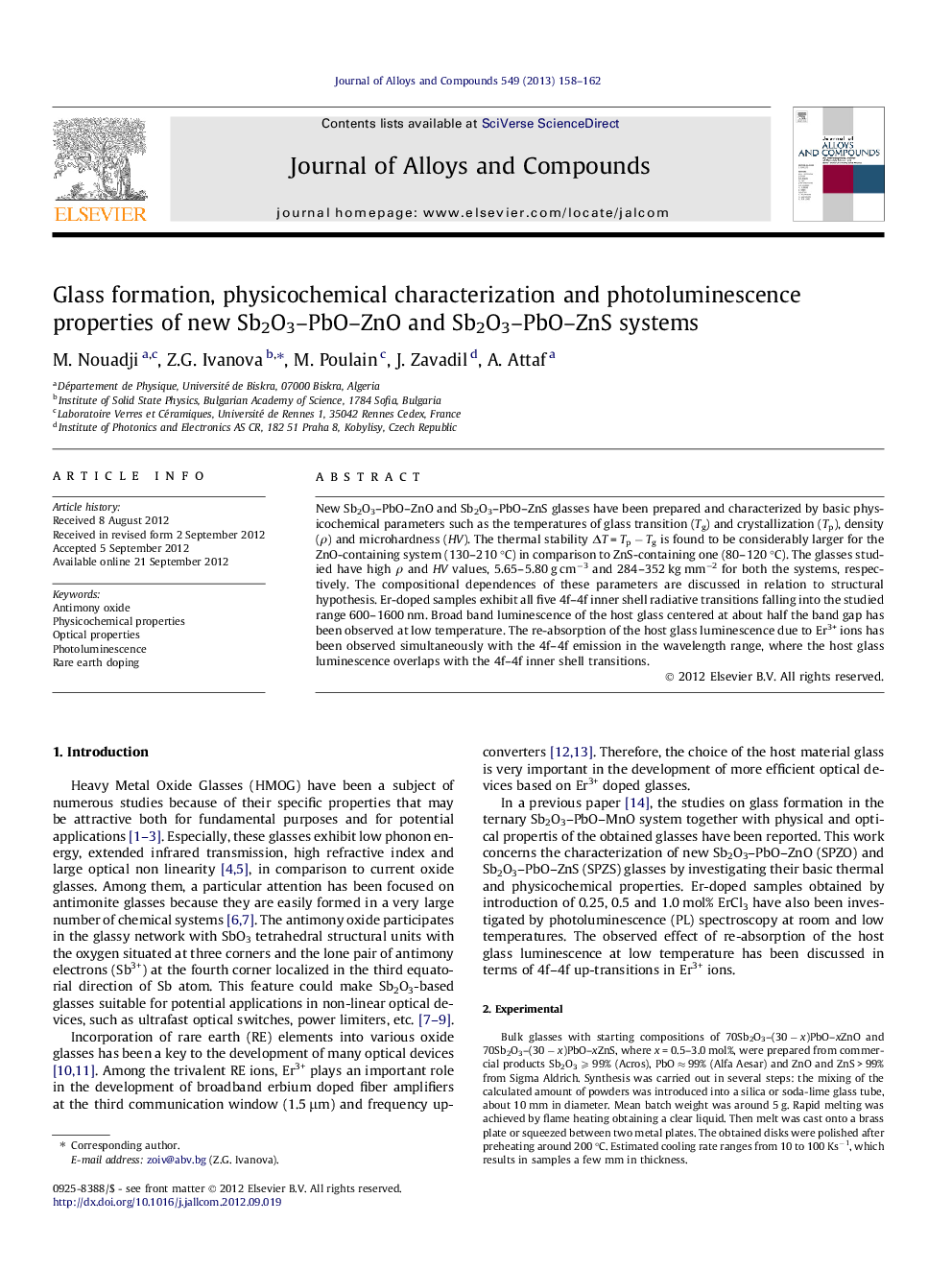| کد مقاله | کد نشریه | سال انتشار | مقاله انگلیسی | نسخه تمام متن |
|---|---|---|---|---|
| 1615159 | 1516344 | 2013 | 5 صفحه PDF | دانلود رایگان |

New Sb2O3–PbO–ZnO and Sb2O3–PbO–ZnS glasses have been prepared and characterized by basic physicochemical parameters such as the temperatures of glass transition (Tg) and crystallization (Tp), density (ρ) and microhardness (HV). The thermal stability ΔT = Tp − Tg is found to be considerably larger for the ZnO-containing system (130–210 °C) in comparison to ZnS-containing one (80–120 °C). The glasses studied have high ρ and HV values, 5.65–5.80 g cm−3 and 284–352 kg mm−2 for both the systems, respectively. The compositional dependences of these parameters are discussed in relation to structural hypothesis. Er-doped samples exhibit all five 4f–4f inner shell radiative transitions falling into the studied range 600–1600 nm. Broad band luminescence of the host glass centered at about half the band gap has been observed at low temperature. The re-absorption of the host glass luminescence due to Er3+ ions has been observed simultaneously with the 4f–4f emission in the wavelength range, where the host glass luminescence overlaps with the 4f–4f inner shell transitions.
► New Sb2O3–PbO–ZnO and Sb2O3–PbO–ZnS glasses have been prepared and investigated by basic physicochemical properties.
► Er-doped samples have been studied by photoluminescence spectroscopy at room and low temperatures.
► The enhanced 4f–4f luminescence from Er3+ ions make these glasses good materials for application in current photonic fields.
Journal: Journal of Alloys and Compounds - Volume 549, 5 February 2013, Pages 158–162